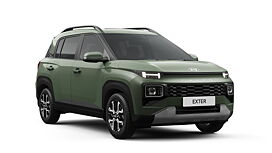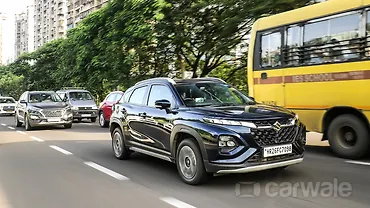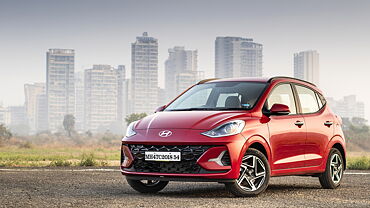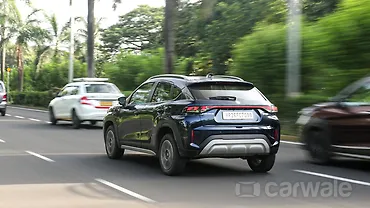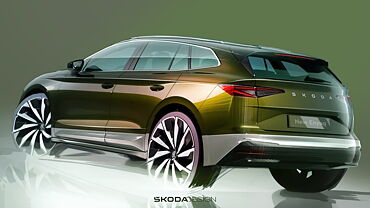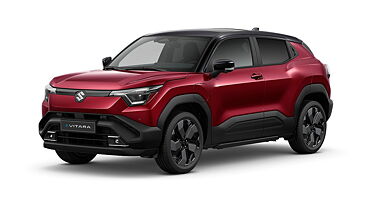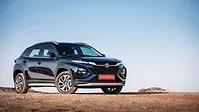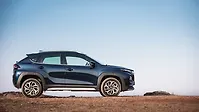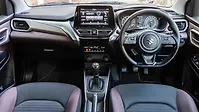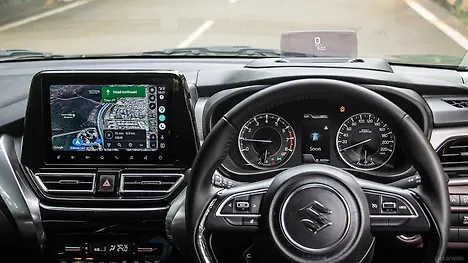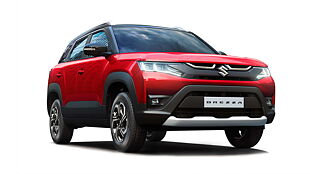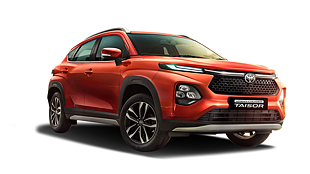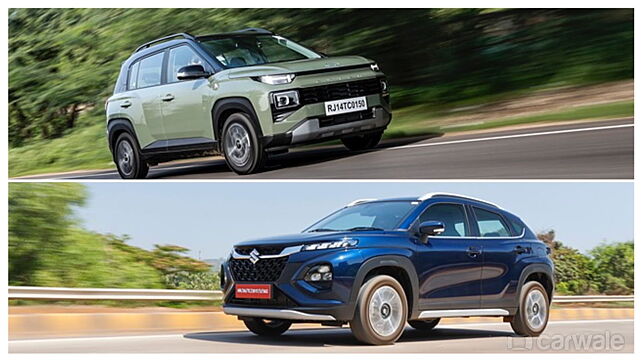
- Maruti Fronx launched in India on 24 April
- Hyundai Exter launched in India on July 10
Why are we comparing the Exter and the Fronx?
Let us be more specific. Why are we comparing a top-spec Hyundai Exter with the most expensive trim of the Maruti Fronx 1.2? They are similar in terms of underpinnings and both are going for the SUV game with two different approaches in terms of body style. They may be from different segments but only Rs 4000 separates them. How do they stack up, let’s find out.

Features and safety of both cars
We start this story with the biggest battleground- Features. Both cars offer climate control touchscreen infotainment systems Apple CarPlay and Android Auto, power mirrors and windows. However, in this top guise, the Exter is better loaded in terms of feel-good features. It has six speakers, wireless charging, a digital instrument cluster with colour MID, electric sunroof, rear wiper, button start and reverse camera and two 12V power sockets. The Fronx’s only major advantage is that it gets LED headlamps and DRLs as compared to the Exter’s Xenon projector units.

On the safety front, the Exter gets six airbags as standard across the range while the Fronx in this lower-spec variant has dual front airbags. However, future safety regulations are expected to make six airbags standard for all new cars sold in India.
Connected car technology Bluelink for Hyundai and Suzuki Connect are offered on the higher spec variants of these vehicles. But if we factor that into the comparison then we are looking at the Zeta 1.0-litre turbo MT and the SX (O) Connect variant priced at Rs. 10.56 lakh and Rs 10.10 lakh respectively. The Zeta AT is priced at Rs.12.06 lakh.
| Dimensions (MM) | Fronx | Exter |
| Length | 3995 | 3815 |
| Width | 1765 | 1710 |
| Height | 1550 | 1631 |
| Wheelbase | 2520 | 2450 |
| Ground Clearance | 190 | 185 |
| Boot space (litres) | 308 | 391 |
| Wheel size | 195/60 R16 | 175/65 R15 |
Exter Vs Fronx dimensions compared
In terms of dimensions, the Fronx is an outright winner as it is wider and longer with a marginally higher ground clearance than the Exter. The Hyundai does manage to hold its own in the department of boot space and height as it has 391 litres compared to the Fronx’s 308 litres. This we believe is due to the higher roofline of the Exter. While this may be a minor point, it should be noted that the Fronx in this guise rides on 195/60 R16 wheels while the Exter uses 175/65 R15 wheels. In the larger scheme of things, this adds more presence to the overall appearance of the car.
| Specs | Fronx | Exter |
| Displacement | 1.2-litre | 1.2-litre |
| Power | 89bhp | 82bhp |
| Torque | 113Nm | 113Nm |
| Gearbox | Five-speed AMT | Five-speed AMT |
| Tank capacity | 37-litres | 37-litres |
| Claimed Mileage | 22.82kmpl | 19.2kmpl |
| Total Range | 847 | 710 |
Exter Vs Fronx engine and gearbox

The Maruti Fronx in this guise is powered by Suzuki’s 1.2-litre K-Series petrol engine producing 89bhp/113Nm and is mated to a five-speed AMT powering the front wheels. The Exter too is powered by a 1.2-litre engine producing 82bhp/113Nm and also mated to a five-speed automated manual powering the front wheels. On paper, these two are evenly matched right down to the fact that they have 37-litre fuel tanks.

Maruti claims a mileage of 22.82kmpl while Hyundai claims 19.2kmpl giving them a claimed range of 847km and 710km giving the upper hand to the Fronx. We of course will test both these cars once they enter the CarWale garage and should be able to give you a full picture of their real-world mileage. Lastly, in this fully loaded guise, Hyundai offers paddle shifters for the Exter which if nothing else should add to the “fun to drive” factor when looking at both vehicles.
What should be your deciding factors?

The Exter clearly wins on the feature front both in terms of useable and feel-good features but the Fronx is a larger car with more presence and with a marginally more powerful 1.2-litre engine, better mileage and a bigger range. Here is also where the body style comes into play boiling down to if you want the boxy SUV look or the curved lines of a crossover design.



